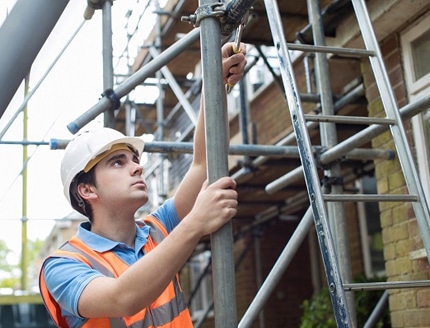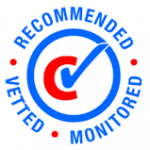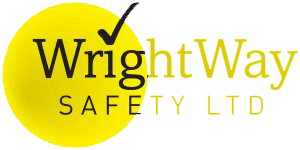Scaffolding Inspection
To ensure it is safe, scaffolding needs to be checked regularly. Initial inspections, regular on-site inspections, are available, providing extensive support for all your scaffolding needs. Our inspections are performed by licensed, qualified experts. Ace Scaffolding uses the scafftag system. Our fully qualified inspectors can provide you with a site inspection before installation and after disassembling that complies with the latest health and safety regulations.
We understand that your scaffold will need to keep going throughout the entire job, that is why Ace Scaffolding provides maintenance along with our quality inspection services designed to give our clients piece of mind. You can rest assured your project is in safe hands. Ace Scaffolding has an excellent safety record, and an on-site Health & Safety Rep will be on your site while we work. We’re here to help, no matter your scaffolding needs. Have a question? Reach out to us We can also offer advice on scaffolding and access solutions tailored to your individual needs.
We Are Also Available to Offer Scaffolding Related Advice

The Basics of a Scaffolding Inspection
Ace Scaffolding can conduct an independent statutory inspection, and we run on-site scaffold monitoring services in line with regulation 12(7) of the 2005 Work at Height Regulations. Independent scaffolding inspections are the legal responsibility of the scaffolding user and Ace Scaffolding Eastbourne provides a support service to perform this key duty on behalf of scaffolding customers in Sussex. Users must confirm the integrity of the scaffolding and whether it is safe for use. At Ace Scaffolding we pride ourselves on offering independent advice to our customers.
Why Does Scaffolding Have to be Inspected?
Scaffolding is one of the most versatile forms of access equipment. It allows safe access to scaffolding, ladders and stair towers for painting, insulation and electrical work. Scaffolding with large frames are prominent on construction sites that utilise them. For renovation work, it could be the first sign that a building project has started from the outside. Working at heights can be risky. In 2017/18, 35 fatal falls from height were recorded. This statistic doesn’t just affect people working directly at heights, but anyone working near someone else who has to work at height. High-altitude falls are responsible for over 8% of non-fatal RIDDOR accidents in the construction industry according to HSE statistics. The HSE regulates scaffolding use with its enforcement of mandatory safety standards.
Who Should Carry out the Inspection?
To comply with the 2005 Working at Heights Standard, scaffolding used for construction work must undergo inspection prior to first use and thereafter once every 7 days until it is taken down. It’s essential that you regularly inspect your scaffold to check it hasn’t been damaged or weakened over time by adverse weather or other incidents. The scaffolding you use must be properly inspected, and it is your responsibility to ensure this has been done.
Our Guarantee
- More than six years’ experience
- 100% assurance for satisfaction and safety
- Excellent service
- Industry-approved and qualified scaffolders
- A complete array of scaffolding services
- Meticulous, reliable, and professional
- Unrivalled industry experience
- Provision of unmatchable work value for money
How Often Should Scaffolding be Inspected?
According to HSE guidelines, a competent person should carry out regular inspections to check the condition of fixed and movable scaffolding components. To be considered competent enough, the CISRS (Construction Industry Scaffolders Record Scheme) qualification is one every scaffold inspector should hold. The qualification is a benchmark which shows that an individual has the necessary level of knowledge, understanding, and competence to work as a scaffold inspector.

Alternatively, inspection can be performed by a specialist trained in the inspection of that specific type of scaffolding system. Individuals who complete a professional course can be certified to conduct inspections on basic scaffolding systems. The scaffolding inspection course educates trainees on the proper methods of erecting and dismantling scaffolds, as well as the safe uses of the equipment involved. Inspectors must record their observations after each inspection exercise and keep this report at hand throughout the project duration. After completion of the construction work, the reports should be kept for another three months at an office location. The scaffold inspection report should highlight any deficiencies or instances that could pose a threat to health and safety including any preventive/corrective action taken, even if said action is taken without delay. This makes recurring problems easy to identify. Scaffolding reports should have the following information: The address and full name of the organisation or individual in charge of the project.
The position and name of the inspection official. The date, place and time A report on the worksite or the scaffolding inspection site. Details on any potential danger to a person’s health and/or safety encountered during inspection and advise on how to correct it. Details of other measures deemed necessary. We offer advice on scaffolding inspection services, whatever you need, we’re sure to be able to help. We have the expertise to carry out independent scaffolding inspections, oversee audits and scaffolding activities. We offer a range of scaffold inspection training for inspectors at various levels.
How Often Should A Harness Be Inspected?
Here are the 3 recommended inspection levels:
Pre-Use Testing
To ensure the integrity of the system, a safety inspection must be performed by the user before each shift. Noticed defects should be communicated to the employer.
Detailed Inspection
An official scaffold inspection should be conducted in 6-month intervals. The frequency of equipment use should determine the duration, (we recommend a 3-month interval) this is especially vital if the equipment is used in an unconventional environment which could include steel towers/masts with edges, steel assembly, and scaffold demolition areas.
Interim Inspection
These are detailed, recorded inspections that may be done in addition to pre-use checks and detailed inspections. Interim inspections may require detailed checks because the employer’s risk assessment has identified a risk that could lead to significant deterioration and compromise the lanyard safety before the next detailed inspection is due. The need for and frequency of interim inspections depends on usage. Appropriate examples include hazards arising from harsh environments involving paints, chemicals or sandblasting. You can take advantage of periodic interim inspections when you cannot determine the nature of the substance from which a compound is made.
Scaffolding Types
- Residential Scaffolding
- Commercial Scaffolding
- Industrial Scaffolding

Who is Responsible for the Scaffold Inspection?
According to the Health and Safety Regulation of 1999, employers must assess the risk of the job to the health and safety of the workers and the public. The 2015 Construction Regulation (Design and Administration) holds commercial customers responsible for ensuring the health and safety of all stakeholders on a project. For domestic customers, the builder, scaffolder or contractor using the scaffolding is responsible for maintaining on-site safety.
Legal Requirements for Scaffold Inspection
Before use, scaffolding must be inspected and confirmed in the initial test report or a handover protocol. Scaffolding systems need to be checked for defects every 7 days. Scaffolding should be examined for risks that can affect the structure’s integrity including adverse weather and alterations. Inspection reports are best kept in a format that can be transferred, with little effort, into printable form and protected against tampering. The person responsible for the inspection must prepare a report and communicate it to the employer or client within 24 hours of completing the inspection. An employer who receives a report must keep it in the location where the inspection was performed until completion of the construction work and then keep it in his or her office for 3 months.
We Are Also Available to Offer Scaffolding Related Advice
Information to be included in an inspection report include the following:
The address and the name of the individual on whose behalf the exercise was completed. The location of the inspection exercise. Details of the scaffold examination. The time and date inspection was carried out. Details concerning issues that could affect the health and safety of on-site personnel. Actions taken to resolve problems reported by the inspector. Details on important moves. The name and position of whoever is put in charge of the inspection report.
Recommendations by NASC
Some of the recommendations of NASC are
CISRS cardholders will be regarded as competent scaffold inspectors if the employer can demonstrate that they have the expertise which Parts 1 & 2 of the CISRS course modules cover. CISRS Booklet Appendix A-F pages 37-52 is the place to look if you need to get CISRS course content. If an employer can prove that an individual has the right skills and experience to inspect a basic scaffold structure and such person has gone through the CISRS Basic Scaffold Inspection Training Scheme Course SITS, he or she would be considered qualified to inspect a basic scaffold structure. The CISRS Advanced Scaffold Inspection Training Scheme is developed and designed by experts in the field of scaffolding, successfully passing the knowledge test provides you with advanced knowledge to assist you to conduct inspection of complex scaffold structures. Scaffold inspectors, supervisors, and managers should take the course since they are responsible for commissioning, handing over, and inspecting scaffolds as well as filing the inspection reports according to Work at Height Regulations of 2005. A CISRS SITS qualification remains valid for a period of 5 years. Inspectors should also be aware that their qualification period can only be renewed by re-sitting the course after the validity period expires. For an individual to inspect system scaffolds, after going through the basic scaffold inspection course, he or she needs to obtain knowledge about the system that they’ll be inspecting. Interested parties can get this information from the manufacturer, the supplier, or CISRS-approved training providers.
We Are Also Available to Offer Scaffolding Related Advice
Our Emergency and Monitoring Scaffolding Inspections
We carry out both emergency and scheduled scaffolding inspections. We provide digital photographs and a detailed report after the scaffold inspection.
Frequently asked questions
Get in Touch With us for Your Scaffolding Hire Quotes












